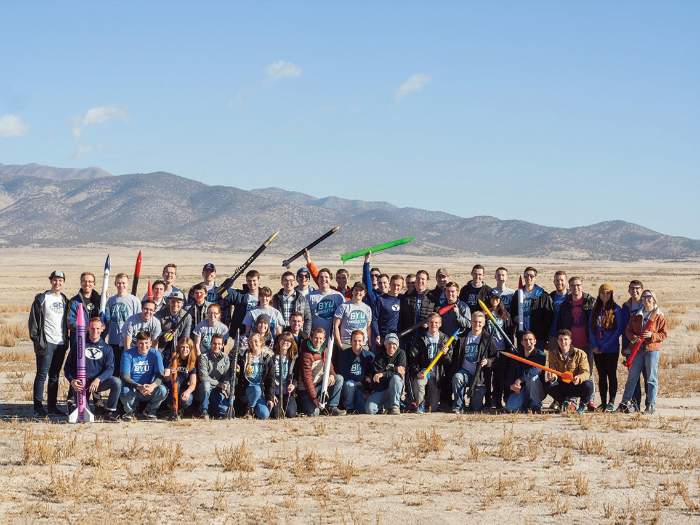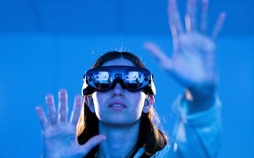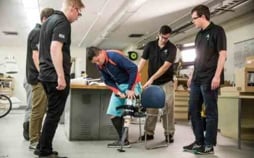BYU Students Explore a New Reality
“As someone who wants to be a user experience designer, working in this lab has been an exciting challenge,” said Miah Dawes, one of the first students to take a class in BYU’s Mixed Reality Lab.
Change people's lives at home and around the world
February 2019

For Patrick Walton, space truly is the final frontier, and he’s determined to help explore it. As a junior, he started the astronautics section of BYU’s chapter of the American Institute of Aeronautics and Astronautics, including a rocket competition that eventually became the BYU Rocketry Club. Using BYU’s computers, 3D printers, and workspaces, students developed rockets that could fly more than a mile into the sky.
“We had multiple faculty with real-life experience donate their time—mentoring students, reviewing rocket designs, and helping us get permission,” he says. “Over 50 students now compete every year. Last June, a rocket built by those first students took second place at an international competition, flying above 9,000 feet.”
But BYU Rocketry was just the beginning. Walton took a special projects class from David Long, who helped him write a proposal for NASA to build, test, and launch two satellites—a proposal NASA accepted.
“Some days I still reel in shock when I realize that as students, we’ve actually done it—we’ve built a spacecraft,” Walton says. “Over the last couple of years, more than 50 students got paid to design, test, and build small satellites that will actually fly in space.”

“As someone who wants to be a user experience designer, working in this lab has been an exciting challenge,” said Miah Dawes, one of the first students to take a class in BYU’s Mixed Reality Lab.

Sierra Leone’s civil war left behind more than 27,000 amputees. Recent BYU students created an adjustable and affordable prosthetic socket for the veterans.

BYU engineering students have teamed with the nonprofit Engage Now Africa (ENA) to create a socket for above-knee amputees that fits neatly into prosthetics made available by the International Red Cross.